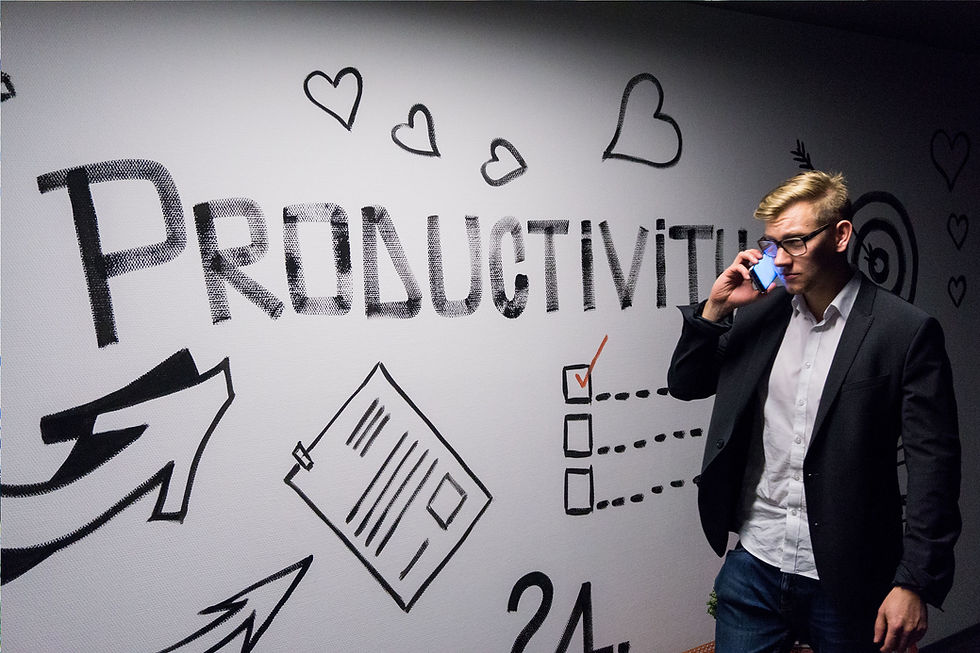BECOMING PRODUCTIVE: From Hard Work to Productivity
- Madelyn Hamilton
- Apr 26, 2024
- 3 min read
Updated: Aug 5, 2024

Sales Director Sara is determined to boost her team's quarterly sales figures. The team has been underperforming, and Sara is ready to turn things around.
Initially, she decides to lead by example—coming in early, staying late, and even working on weekends. She personally reviews every client account, spends extra time coaching her sales reps individually, and manually tracks sales metrics. While her approach showcases her dedication and potentially boosts morale initially, it’s centered around her own efforts and input rather than systemic improvements.
However, after consulting with a business and executive coach, Sara realizes that while her hard work is commendable, it might not be the most effective strategy for achieving the team’s goals. She decides to shift her focus towards productivity:
Leverages Technology: Sara implements a new customer relationship management (CRM) system that automates lead tracking and data analysis, reducing manual work and errors.
Streamlines Processes: She restructures team meetings to be more focused and shorter, ensuring that these interactions are strictly for strategic discussions and problem-solving.
Empowers Team Members: Sara delegates more responsibilities to her senior team members, allowing them to make some client-related decisions. This empowers them and frees up her time to focus on strategic initiatives.
Focuses on Training: Recognizing gaps in skills, Sara arranges targeted training sessions that directly address these areas, improving overall team competency and efficiency.
With the productive approach, Sara’s team becomes more efficient. The new CRM system provides valuable insights into customer behaviors and sales trends, enabling the team to target their efforts more effectively. Meetings become more actionable, and team members feel more engaged and responsible. As a result, the team not only meets their sales target but does so with less overt exertion and more strategic focus.
Hardwork to Produc
This example from the sales world is a powerful illustration of the benefits of shifting from a hardworking to a productive mindset. But how can you, as a business or executive coach, help your clients make this shift in their own contexts?
1. Emphasize the Importance of Tools and Systems: Encourage leaders to implement technologies and systems that enhance efficiency. Automation tools can handle repetitive tasks, allowing team members to focus on more complex, value-added activities.
2. Redefine Meetings and Processes: Guide leaders to streamline meetings and processes, cutting down on unnecessary time expenditure. This not only speeds up workflows but also clears space for creativity and strategic thinking.
3. Delegate and Empower: Teach leaders the value of delegation. By trusting team members with more responsibilities, leaders can enhance team engagement and motivation, leading to higher productivity and better results.
4. Focus on Targeted Training: Highlight the importance of specific, skill-targeted training sessions that directly address team needs. Effective training equips teams with the right tools to work smarter, not harder.
In today’s business environment, being productive isn’t just about cutting down on time—it’s about optimizing how that time is spent.
The coach's role is to support your clients through the transition from being merely hardworking to being strategically productive. This approach not only increases output but also enhances job satisfaction and sustainability within teams.
Through targeted and strategic questioning planning, a coach can help leaders transform their work environments, creating spaces where productivity thrives over mere hard work. This not only leads to better business outcomes but also fosters a healthier, more balanced workplace.